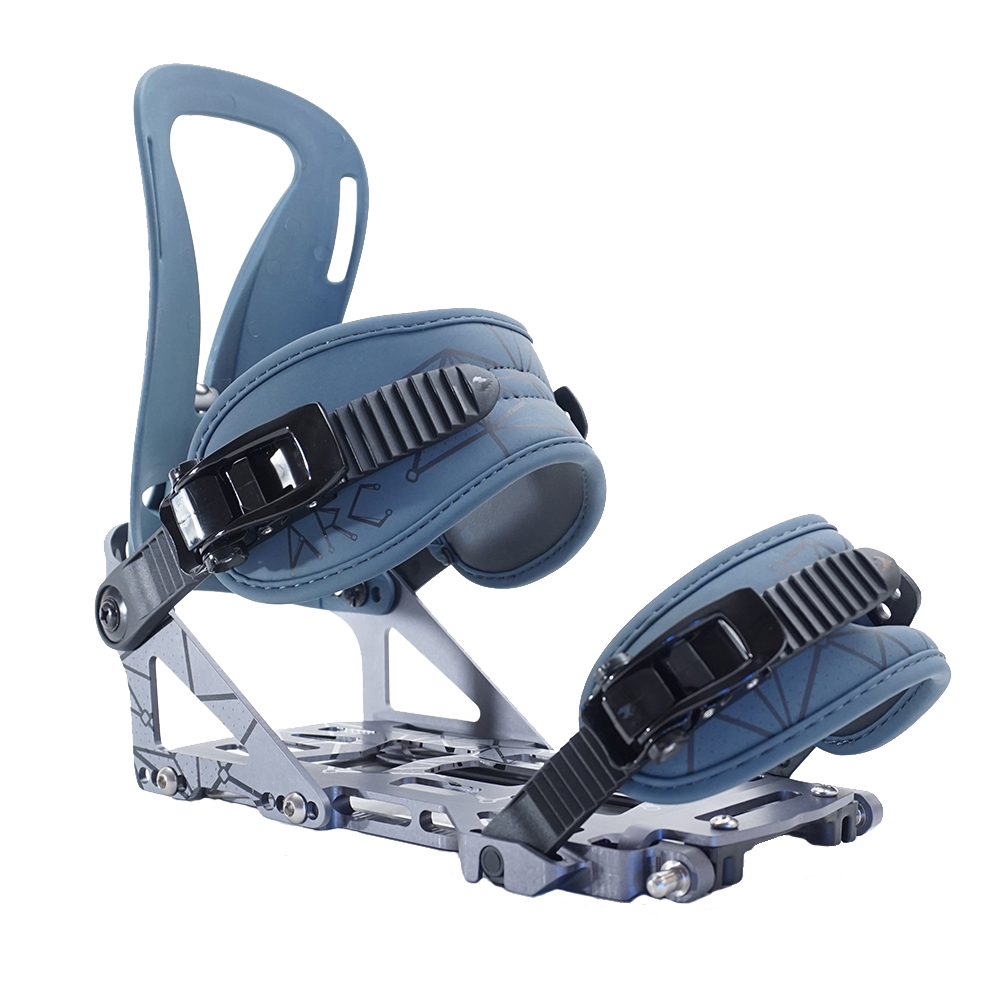
2020-21 Spark R&D Arc Splitboard Binding
Size Tested: M
Stated Weight: 675 g per binding
Blister’s Measured Weight: 681 g per Binding
MSRP: $385
Board: Rossignol XV, 163 cm
Boots: Burton SLX (size 10)
Test Location: Wasatch Mountains, UT
Days Tested: 10+
[Note: Our review was conducted on the 15/16 Arc, which was not changed for 16/17, 17/18, 18/19, 19/20, or 20/21, apart from graphics.]
Intro
Spark R&D has historically been one of the major innovators in the splitboard binding market, and they continue that legacy this season by revamping their entire line. The Arc is an updated version of the popular Magneto, which changed the splitboard game for many in 2013 with the introduction of the Tesla binding system. (For an in-depth look at the Tesla system, as well as a discussion on the merits of Voile pucks, see Justin Bobb’s 2014 review of the Magneto.)
The new Arc bindings pack some substantial upgrades. Notably, they’re a stated 10% lighter than the Magneto, weighing in at a scant 675 g per binding according to Spark (and 681 g per binding according to our scale). The revamped highbacks are lighter and softer, and have an easy-to-adjust forward lean bar that folds up for a -13° touring mode.
The most significant upgrade, and most hyped feature by Spark, is the new Tesla T1 climbing wire system. This system features a single climbing wire with 12° and 18° positions for decreased weight and added simplicity.
Out of the box, the Arc felt well-built and lightweight, and the slate color looked great. Setup is easy for anyone with experience with Voile pucks, and Spark’s instructions are simple. The aluminum baseplate allows for screwdriver adjustment of the pucks without removing the binding.
Touring
From my first tour, the Arc impressed me. The Tesla system is downright amazing. It makes transitions easy, especially with gloves, when compared to Voile plates or other pin-based systems. The touring bracket is smooth, easy to get into, and solid.

Pin-based systems like the Karakoram Prime Carbon reviewed by Andrew Forward can have issues with lateral play in the touring brackets, and I have had absolutely no issues with this in the Arc. The lack of small, breakable, or moving parts also adds a welcome degree of reliability. The design is intuitive, tough, and designed for years of abuse.
The updated Rip n’ Flip highbacks are also impressive, the -13° touring mode is a huge plus, especially with the quick transition the forward lean lever allows.
Riding
Downhill performance is top-notch, aside from the differences in torsional flex in the board inherent to splitboarding, the feel isn’t much different from standard mid-flex snowboard bindings. The Arc is also very customizable – the heelcup is extendable, and the highbacks can be rotated.
The Burton-made straps are minimalist but comfortable, and the (also Burton) ratchets and ladders are durable and easy to use.
The highback flex is medium, with a nice amount of torsional give, a welcome change for the many riders who found split binding highbacks too stiff across most brands. The cored aluminum baseplate is stiff, and provides needed support while keeping weight low.

My 163 cm Rossignol XV split is among the stiffer boards on the market, and I had no issues with response both at high speeds in chattery snow or in tight trees as long as I cranked the forward lean up a little. If you’re looking for a stiffer, ultra-responsive binding, check out Spark R&D’s Surge binding or the Karakoram Prime Carbon.
NEXT: T1 Climbing System, Comparisons, Etc.

thanks a lot for the review.
Nice website!
Good review! I’m glad to hear you didn’t have an issue controlling your XV with the softer highback. I just ordered a pair of Arc to put on my Venture Odin and responsiveness was a concern since it’s a burly board. I like to ride with some heavy forward lean so it doesn’t sound like it will be a problem. Can’t wait to get it out!